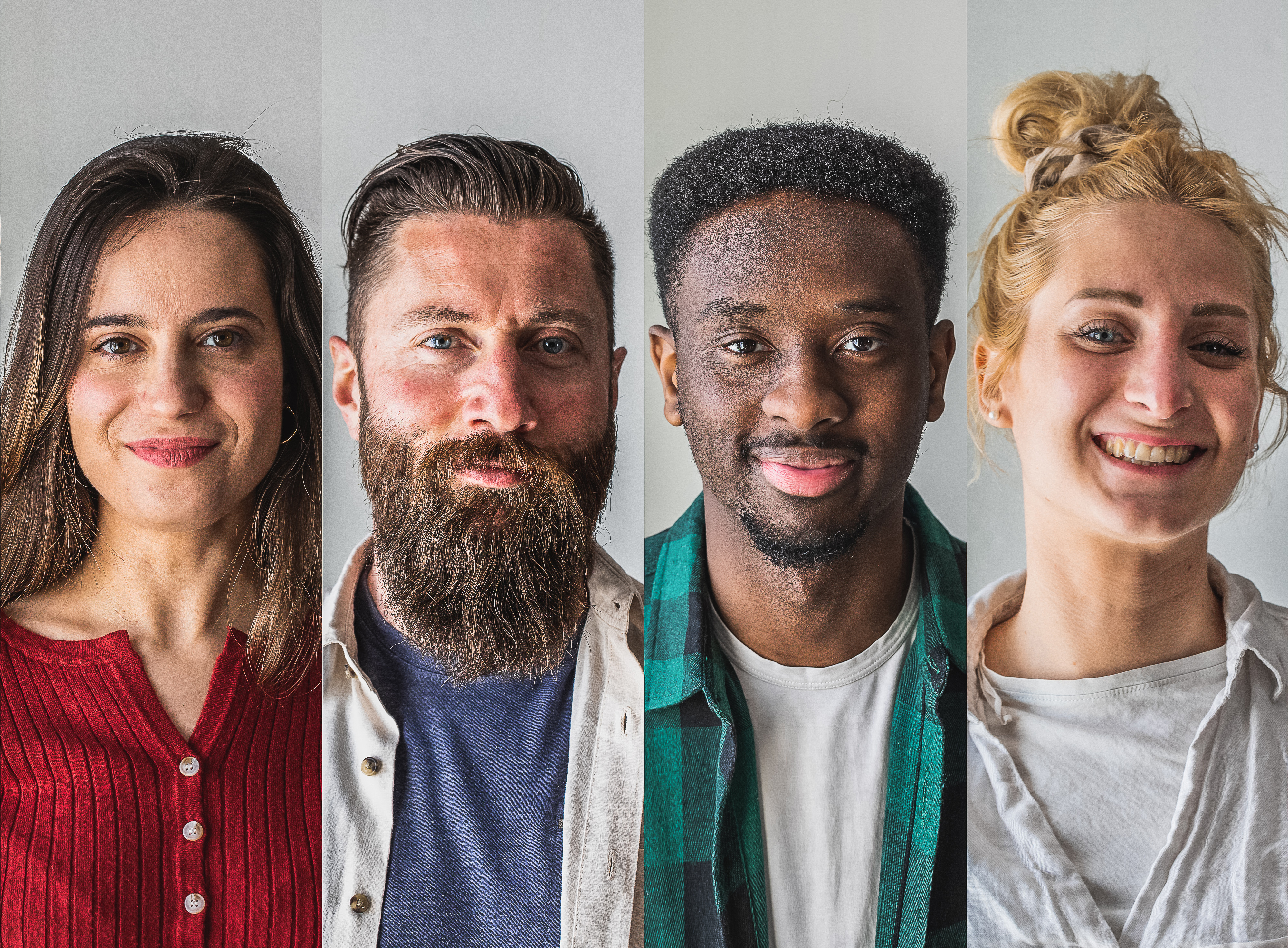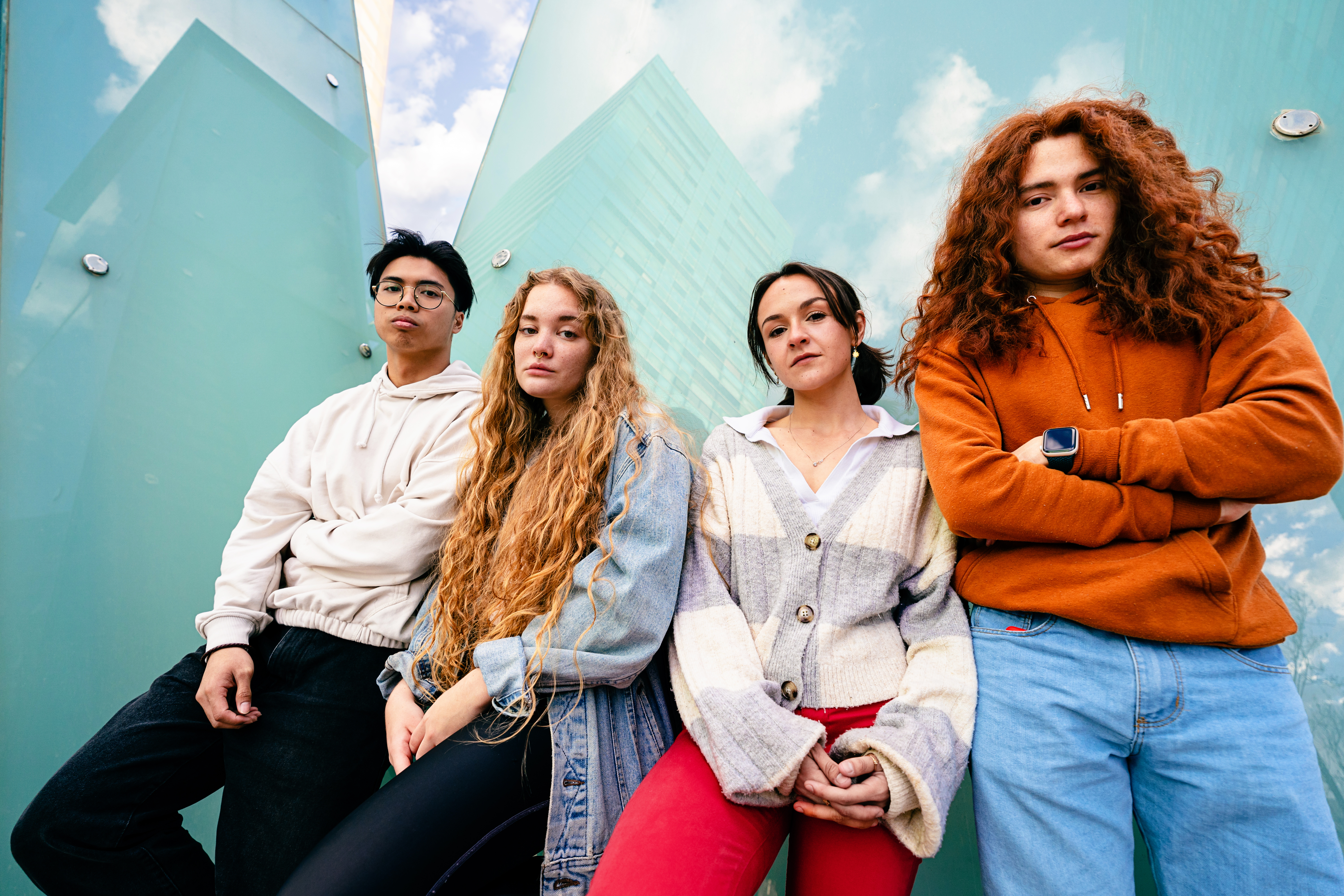Every audience is different when it comes to sustainability. You need to know which key stakeholders care about sustainability, how they think about it, how they talk about it and how it influences your bottom line. ERM Shelton researchers are sustainability experts and seasoned market researchers who will make sure you’re delivering the right message to the right audiences in the right way.

Know Your Audience
We can help you check your biases. Our ethnographic research, interviewing and segmentation studies help clients understand the nuances of who their key audiences are, whether that’s customers, consumers or internal stakeholders.

Develop New Offerings
The best new products and services are grounded in what someone wants and needs, not just what your company can make. From needs assessment through concept testing, the right research can optimize your next offer.

Find Your Sustainable Future
Sustainability is how we make it to the future. Research can help you plot the course by identifying emerging issues, finding the right words to speak sustainability to your key audiences, and formulating a sustainability strategy that creates a market advantage,
Our Research Approach
Our Research Approach
Let’s Dig Deeper: Introduction
Any market research firm worth their salt can ask people questions about sustainability. The problem is that sustainability now carries a lot of social pressure. It’s very easy to get false positives. How do you avoid that? By working with a firm who’s been at it for years and knows how to get the real answers.
At ERM Shelton, we’re exclusively focused on creating a marketing advantage for organizations working to create a sustainable future. After 29 years in business, and over 15 years of conducting our own proprietary Pulse studies, we’re subject matter experts in sustainability, including the exploration of U.S. market beliefs/expectations surrounding sustainability, CSR topics, and ESG (environmental social governance) topics. Our team members are featured speakers at 15 – 20 industry events annually.
People ask how our research department works. So we’ll dive in and tell you. Here’s what we’ll cover:
Our Research Approach
Knowing some stuff is help. Doing something effective with what you know is powerful. At ERM Shelton, we know that successful business strategies, compelling marketing communications, and beautiful and impactful creative are all rooted in a deep understanding of people and the worlds they live. And because our area of focus is green market research, this means exploring their ideas about topics like sustainability, the environment, social issues, and the melding of "people, planet, profit".
At ERM Shelton, we can help you understand your B2B customers, your end consumers, your market, and your unique business challenges and opportunities — as they relate to sustainability and the circular economy. Our research department regularly helps clients crack the code on the toughest sustainability problems using market research.
Whether we’re gathering primary data by talking directly to your customers, digging into secondary data with a fresh eye toward your business, or using our using our deep catalog of proprietary sustainability trend data to support and expand insights, we’re all about getting your customer’s point of view and bringing it to life for you.
Many tools in our toolbox
We use multiple tools, designed each time with your specific sustainability/CSR-related goals in mind, to deliver insights that serve a strategic need.
We’re deliberate about how we gather data for each client and for each project. Every time we embark on a new job, we prescribe the best (and most efficient) ways to find out what you need to know. Whether its organic, rich qualitative data that gives a revealing look at day-to-day attitudes, beliefs and behaviors or robust quantitative data that accurately sizes, measures and predicts, we are seeking a better picture of the world. The moral of the story is: we don’t apply cookie-cutter methodologies. When we do research for you, it will be customized to your needs each and every time. And we have tons of great tools in our methodological toolbox!
Choosing the right tool for the job
Let’s explore some methodologies in the area of sustainability-focused market research and how each might be used to get the answers you need.
Qualitative Methodologies
When what you need is to gain a deep understanding of a topic or of your consumers, we have a wide array of customized approaches to get you there.
Ethnography, which is rooted in anthropology, is an incredibly powerful tool for market researchers. Chiefly, it allows us to observe consumers in their everyday lives, complete with all the rich context that’s unspoken and yet critical. This allows you to observe the intersection of your brand and your consumers in the world where they live, not in some artificial environment.
When we develop a guide for ethnographies, we, of course, have questions and topics we want to talk about, but we’ll also have an unspoken list of things to look for and observe. These observations often lead to the insights that impact our clients’ businesses most. Ethnographic work in the sustainability field can take on different forms, depending on the goals and needs of each project:
In-Person Ethnography
In-person ethnographies allow us to observe one person or family at a time and get to know them for a day. When we get to join someone in their home and see how they really live, we get a very detailed picture of the topic we’re researching.
Evidence of people’s behaviors, beliefs and needs are manifested in their surroundings in ways they may not able to articulate in a traditional interview. With in-person ethnography, we spend a lot of time observing the participant and his or her surroundings, gathering clues we might never have discovered otherwise.
An in-person ethnography allows for organic observation, in-the-moment follow-ups and a great chance for making a personal connection with each participant. Additionally, we can adjust as the day progresses, making each ethnography highly personalized.
|
Case study: For one of our energy clients, we conducted in-person ethnographies on the subject of voice-assistant technology, with a goal of learning how open residential energy customers would be to using VAT to interact with the utility. Imagine how much deeper our understanding was when we were able to simply watch and listen as these customers moved throughout their typical days, calling out prompts and questions to their voice assistants, and reacting to them in the moment. As a result of this observation, we identified customer groups based on their needs, goals and approaches with VAT, and were able to recommend the best ways for our energy client to harness this technology with each of its customers. |
Virtual Ethnography
For research in which we want to see life through consumers’ eyes, and especially if the goal is to gather data over a longer period than one day, virtual ethnography is perfectly suited to the job.
Consumers use technology (a Go Pro camera, for instance, or a mobile app), along with a detailed guide on what to do, to take us with them in their daily lives. We get to observe them in real time, and they get comfortable and open up to us as they go.
Although this methodology doesn’t provide for organic, in-the-moment observation the way in-person work does, virtual ethnography provides other unique benefits. For instance, since we’re not physically there with the participant, they might be a little less self-conscious and a little more “real” with us. And, unlike an in-person ethnography, a virtual ethnography gives us the chance to capture data over time.
|
Case study: An environmental NGO client of ours wanted to get the full picture of the lives of farmers. While it didn’t make sense for us to physically follow farmers in locations across the country for weeks at a time, we were able to be there virtually using our mobile app. Over the course of a couple of weeks, farmers took us along as they did their jobs, interacted with their families and crews, and spent time in their communities. The result was a deep understanding of farmer lives and values, which the ENGO could use to reach out to, and communicate with, their farmer members in meaningful, authentic ways. |
Comparing virtual vs. in-person ethnography
| Virtual | In-Person | |
| Thoughtfully designed questions/topics areas | X | X |
| Ability to proble/follow-up | asynchronously | real time |
| Can capture photo and video content | X | X |
| Participant can complete assignments on his/her own time | X | |
| Researchers can organically observe behavior and surroundings | X | |
| Can tweak guide throughout an individual interview | X | |
| Can tweak assignments throughout the overall project | X | X |
| Cost savings for researcher time/travel | X | |
| Can maintain social distancing while participating | X | |
| Opportunities to make a personal connection with participants | via phone and video | in person |
| Digital record of all data automatically created throughout project | X | |
| Opportunity to capture data over time | X |
Paper journals are an excellent alternative when you need to understand your consumer or audience more deeply. Many qualitative research methods are optimized to capture “top of mind,” surface, reflexive reactions. Journaling methods in general, and paper journals in particular, are designed to do the opposite. They allow participants the chance to truly contemplate questions and give them deep, considered thought.
Consider this: introverts make up roughly 40% of the population and most qualitative research discriminates against their thinking style. We find that the paper journal methodology controls for the bias most qualitative research has towards extroverts and allows for the genius of introverts to shine.
Another key benefit of this methodology is allowing participants to express their attitudes and beliefs through other mediums beyond words. Paper journals do allow for plenty of unstructured written responses, but they also allow participants to respond using imagery in the form of sketches, mind maps, photos and collaging. The benefit to these kinds of exercises is that we aren’t asking people to translate images into words, requiring us to then interpret their words for designers (sometimes missing the participant’s intended meaning). Instead, the images live as the participants created them, and our designers can benefit from key insights that are often lost in translation.
|
Case study: A Fortune 50 company came to us with the goal of understanding a truly complicated topic: risk attitudes in the financial realm. We knew from secondary academic research that one’s response to risk is an incredibly complicated idea, built from a wide-ranging set of factors, some permanent and unchangeable, some able to be changed. Paper journals gave our participants the time, space and creative license to respond to a variety of prompts and questions which we built with this secondary knowledge in mind. Through rigorous analysis, we used this rich data to outline exactly where risk responses originate, what influences those responses, and how this government entity could approach consumers with all of these factors in mind, to better help those consumers see the benefits of sustainability-related programs being offered. |
New consumer trends can trace their roots to behaviors that were once considered fringe behavior. For example, not long ago, tattoos were for sailors, prison inmates and bikers, but now Middle America is awash in the inky art. This methodology focuses on discovering the next fringe ideas to shift from subculture to pop culture.
For a Fringe Exploratory, we conduct a content analysis of a variety of social media artifacts to identify pockets of fringe attitudes and fringe behaviors. From there, we work to identify which of these attitudes and behaviors have the potential to influence mainstream consumer attitudes in ways that might shift the marketplace and be either a threat or an opportunity for our clients. Fringe research ultimately focuses on potential shifts in culture, which makes it well suited to study topics related to sustainability, because sustainability is inherently a culture shift.
Sometimes the most efficient way to an answer is to get some consumers together in a group. In this setting, they can respond to stimuli, interact with each other and respond fairly quickly to researchers’ questions and probes. There are a few options and customizations we use to take these more traditional methodologies to the next level, and to get the answers you need.
Focus groups of 6-10 are good for quick feedback on a wide variety of subjects, and we have RIVA-trained moderators available to make sure they’re done right.
Mini groups of 3-5 allow us to get a little deeper with each participant and are sometimes recommended for more sensitive, personal subjects.
Additionally, for either size of group, our experience with ethnographic methods helps us wring even more insight out of the research by crafting thoughtful homework assignments. These types of assignments give participants a chance to do some individual thinking on key topics without the influence of others, get them into the right headspace for the topic at hand, and provide fun ways to break the ice and get things rolling once the groups are underway.
|
Case study: An energy client engaged us to dig deeply into the types of programs their customers wanted, and how those programs and initiatives would impact their customers’ views of their brand. We used a combination of mini groups, homework assignments and creative assignments within the groups to get a detailed picture of these issues. As a result, we created a hierarchy of types of programs and initiatives the energy provider should offer, in what order, to which groups, and how to communicate about each of them. |
We conduct a great deal of B2B research in the sustainability, ESG and CSR space, and in-depth interviews are one of our favorite methodologies for this type of work. When we have an expert on the phone, we can quickly get deep insights on complicated topics, and we know we’re getting incredible quality of data. When conducting these types of interviews, we’ll often keep our own language neutral in order to let the participant lead in creating the vocabulary of the interview. This is important when seeking to understand the nuances of these complicated topics.
|
Case study: A client in the chemical industry sent us on a mission to understand sustainability, and all its related issues, through the eyes of its customers – who were all over the world and in many different industries. From an almost impossibly complex pool of insights gained during these interviews, we distilled out five “disguises” sustainability was wearing among their varied customers. This helped them listen with new ears when talking to stakeholders in all industries, and to better identify where and how they could support sustainability in all its many guises. |
Quantitative Methodologies
Sometimes what you really need are some good, hard numbers to quantify sustainability, ESG and CSR topics. Our robust quantitative toolbox includes methodologies like:
When you have a set of options that’s fairly fleshed out, a concept test is a great way to parse out consumer sentiment, finding out which one they like and why. Concept tests are online surveys in which participants are exposed to those options and asked a series of questions about each one (appeal, purchase interest, relevance, uniqueness, etc.). Once we’ve done a concept test, we come back with solid recommendations on which options to proceed with, and which features/benefits of that option should be communicated most strongly.
|
Case study: An energy client wanted to explore the market potential for a variety of solar programs. Our online survey results told them which potential programs were the most appealing and why, allowing them to go to market with a solid foundation of insights. |
This methodology discovers which choice is really consumers’ favorite out of multiple options. MaxDiff is an approach for creating market or real-world simulations through a choice-based or trade-off exercise. It is helpful for obtaining importance scores for multiple items, and it has been shown to deliver greater discrimination among items and between respondents than the more commonly used rating scale questions.
MaxDiff is more effective for two reasons:
- Respondents must make trade-offs in order to choose the best and worst of the displayed items. They do not rate items in isolation, but in competition.
- Choices are made without the use of a scale. Scales can often introduce interpretation bias – different individuals could feel an item is equally important yet select a different number. Then, using MaxDiff results, you can dig even deeper with a TURF analysis …
To discover how to choose the right offerings or groups of offerings to reach the most people, TURF surveys present a question set asking purchase interest or appeal on a list of offerings. The analysis will show the combination of offerings that provides the greatest impact among consumers.
We use this analysis to help you see clearly which one offering reaches the most people, and then how many more people each additional offering will reach. This way, you can focus on one, or on a bundle, depending on your resources and goals, and know you’re getting the maximum impact.
|
Case study: An energy client had almost 20 different options for energy efficiency and environmental programs they could offer their residential customers. We used MaxDiff and TURF analysis to figure out how they could narrow this down to most strongly shift brand impact for the better. The analysis gave them options for groups of six programs/initiatives, groups of five, etc., all the way down to the one single program that, if they could only offer one thing, would have the strongest positive impact on their brand. Armed with this knowledge, the energy company was able to prioritize the focus of their energy efficiency and environmental program offerings to maximize their dollars and efforts. |
Understanding green consumer segments is essential for companies working on sustainability. ERM Shelton has its own segmentation system that has allowed us to understand the needs, motivations and behaviors of all types of consumers when it comes to sustainability, so we know how important that detail is. (For instance, one of our segments behaves in green ways to be good stewards of their financial resources, and another does the same behaviors because of their strong desire to help the environment. The same messages won’t work for those two segments, even though they might seem like they’re behaving exactly the same way on the surface.)
We like to do the same in-depth analysis for clients, so you too have the keys to communicating with, and developing products for, your target segments. Additionally, if you need to understand your B2B segments, we can dig into those as well, typically through qualitative methods.
|
Case study: A paper and pulp client needed to know how to communicate with various green segments about their products. We used our segmentation to help them recruit participants for research and to create messaging targeted toward those segments. The more they used these segments, the more they got to know them intuitively, which allowed them to quickly understand and identify ways to connect with the segments throughout their marketing and messaging. |
When you’re designing a new product and need to know what features and pricing will work the best, conjoint is a great option. It can help you determine pricing, product features, product configurations, bundling packages or all of the above. Conjoint is helpful because it simulates real-world buying situations that ask respondents to trade one option for another.
|
Case study: In order to understand the ideal components of a potential home energy monitoring system, and to isolate the most important features of a potential program like this, we conducted conjoint analysis for an energy client. As a result of the analysis, we were able to tell that price, provider and brand of smart thermostat were the key features that impacted customer choice. The energy provider was able to use this information to design a home energy monitoring program their customers would adopt. |
If you have already developed products or services and need to zero in on the right pricing, this methodology will provide answers. To determine optimal pricing, respondents are asked the four following questions to determine the indifferent price point, optimum price point, point of marginal cheapness and point of marginal expensiveness.
- At what price would this product be priced so low that you would begin to question its quality?
- At what price would you consider this product to be inexpensive?
- At what price would you consider this product to be expensive?
- At what price would you consider this product to be priced so high that you would not purchase it?
The results reveal optimal price ranges and price elasticity.
|
Case study: We conducted a Van Westendorp analysis for an energy client to uncover motivations and barriers (pricing being one of these) for qualified residential customers to enroll/participate in home energy assessment programs. Using the four key questions, we zeroed in on the right price range for programs like these, and also showed the energy client what “inexpensive” and “expensive” looked like to their potential customers. The client was able to price its programs appropriately to ensure good participation levels. |
And finally...
Analysis by Sustainability Experts
There’s no one way to talk about sustainability, but here at ERM Shelton, we speak sustainability in all its many forms. From climate change deniers to those who put the planet at the center of their decision-making, we know what makes people tick and how to communicate with them effectively. This knowledge, coupled with our business-friendly perspective, lets us identify the sustainability insights and strategies that not only connect with consumers, but also move your business forward in realistic ways.
Bringing Insights to Life
Great data is only useful if you know what to do with it. That’s why we’re committed to giving you the results in impactful, interesting, digestible and actionable ways.
Interactive Share-Outs
When the research needs to be shared internally to inform new product development, customer/consumer understanding, broad communication, etc., that sometimes requires more than a traditional report or presentation. As Benjamin Franklin said, “Tell me and I forget. Teach me and I may remember. Involve me and I learn.” We’ve seen the way interactive, immersive share-outs not only make research come to life, but also give it real staying power in stakeholders’ minds and hearts.
Communication Strategies and Tools
Another path to bringing insights to life includes our communication strategy work. At ERM Shelton, research and creative come together to create the strategic approach to clients' sustainability communications. We craft foundational messaging in the form of Communications Platforms, Messaging Matrices and Elevator Pitches. Often, these ultimately lead to sustainability marketing for our clients, including tools like digital ads, sustainability reports, digital and social marketing campaigns, and internal training tools.











